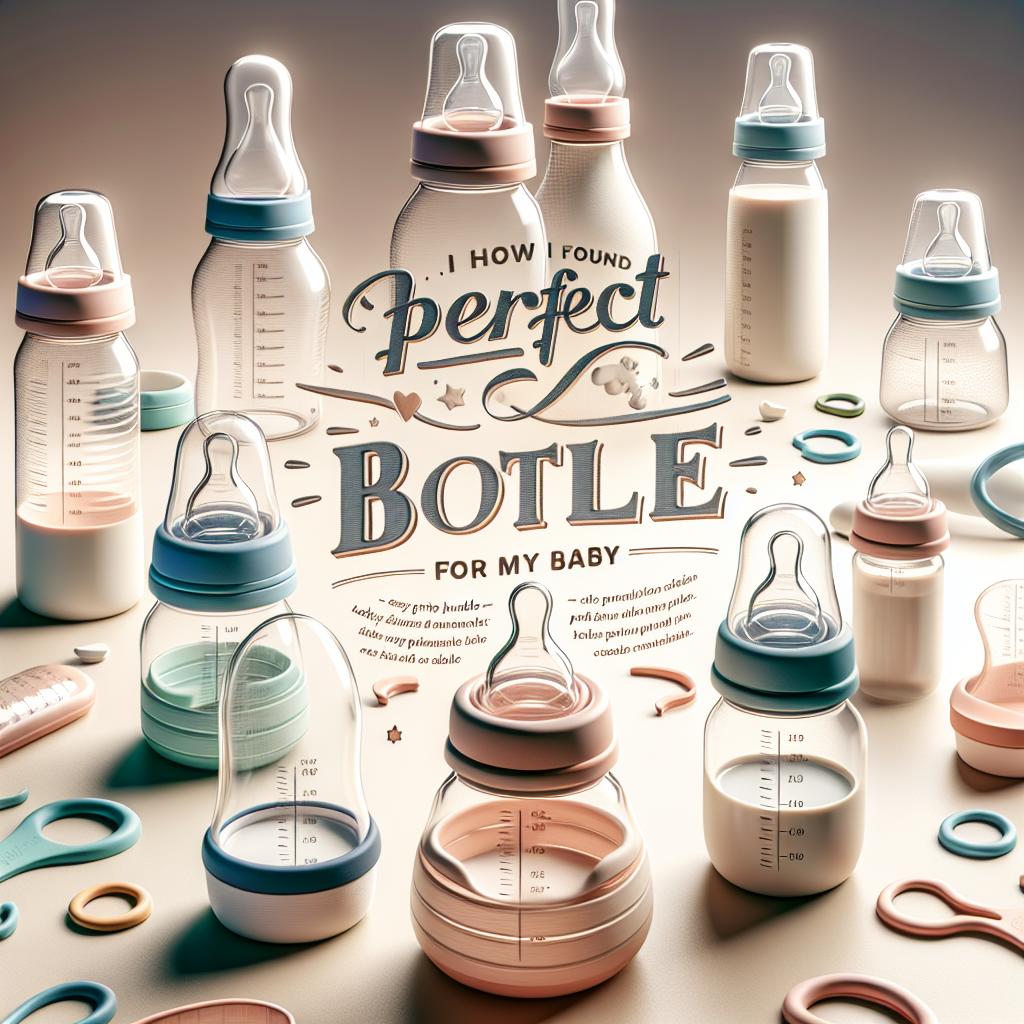Gentle Solutions for Bottle Refusal: Encouraging Your Baby’s Feeding Transition
Understanding the Causes of Bottle Refusal
Before implementing solutions for bottle refusal, it’s essential to understand the reasons behind this behavior. Babies may refuse the bottle due to:
- New taste and texture: The feel and flavor of the bottle nipple can be different from what your baby is used to when breastfeeding.
- Feeding position: Bottle feeding often involves a different position than breastfeeding, which can cause discomfort or confusion.
- Feeding pace: The flow of milk from a bottle can be faster or slower than your baby is used to, causing frustration or disinterest.
Knowing these possible triggers can help you tailor your approach and find the best refusal solutions. Our guide on gentle transitions to bottle feeding offers more insights into these causes.
Proven Strategies to Address Bottle Refusal
When dealing with bottle refusal, remember that every baby is unique, and what works for one may not work for another. Here are some tried-and-tested feeding solutions:
- Pacing the feeding: Slowly introducing the bottle can make the transition less overwhelming for your baby. Start by replacing one breastfeeding session, gradually increasing it as your baby gets used to the bottle.
- Changing the feeding position: Experimenting with different positions can help your baby feel more comfortable. You can try upright feeding, side-lying, or even letting your baby self-feed while supervised.
- Altering the bottle nipple: Using a bottle nipple that resembles a mother’s breast can make the transition smoother. Consider nipples that are soft, flexible, and have a similar flow to breastfeeding, such as the game-changing bottle we recommended for breastfed babies.
For more strategies on addressing bottle refusal, consider taking this comprehensive babycare course.
Avoiding Common Bottle Feeding Mistakes
Avoiding certain pitfalls can boost your success rate while implementing solutions for bottle refusal. Some common mistakes to avoid include:
- Rushing the transition: Gradual transitions allow your baby to adjust to the new feeding method.
- Ignoring signs of discomfort: Check for milk allergies or sensitivities which may cause refusal.
- Misinterpreting cues: Read your baby’s feeding cues accurately. Refusal to feed could be due to reasons other than bottle aversion, like not being hungry.
Our guide on bottle-feeding mistakes provides further insights on this topic. Additionally, you may find this video course on bottle aversion beneficial to avoid common missteps.
Finding Support During the Transition Period
Transitioning to a bottle can be a challenging period for both you and your baby. It’s important not to hesitate to seek support during this time. Reach out to lactation consultants, pediatricians, or online support groups. Resources like Raisingchildren.net.au and Medela’s blog can also provide additional advice and encouragement during this journey.
Additional Resources to Help Your Baby Accept the Bottle
Besides the mentioned support systems, there are other helpful resources available. These include educational handouts and blogs that tackle problems like bottle refusal and nipple confusion.
The International Breastfeeding Centre offers free handouts you can download and reference at your convenience. Handouts cover a wide range of topics, including tips to help your baby accept the bottle.
For personal stories and advice from certified lactation consultants, consider visiting the blog of Lactation Solutions of Princeton. They provide insight into various challenges faced by breastfeeding mothers and solutions for overcoming them.
Overcoming Nipple Confusion During Bottle Feeding
Nipple confusion is another common reason why babies resist bottle feeding. It occurs when babies have trouble switching between the breast and the bottle. This can exacerbate bottle refusal, as your baby may prefer breastfeeding and reject the bottle simply because of the different nipple shape.
La Leche League provides detailed information on this issue. They suggest solutions such as using a bottle nipple that closely imitates the shape, feel and milk flow of your breast, similar to our earlier recommendation. Another suggestion is to allow your baby to latch onto the bottle nipple as they would to your breast, helping them form a better association between the two.
Staying Patient and Persistent
Bottle refusal can be a stressful experience, but remember that your feelings can influence your baby’s reactions. Remaining calm, patient, and persisting in your efforts can be vital in helping your baby adjust to the new feeding method. Remember that it’s okay to take a step back if things become overwhelming. Your comfort, as well as your baby’s, is paramount during this journey.
Join Online Support Communities
Online communities can serve as critical support systems. They offer a platform to interact with others who are undergoing similar experiences, exchange tips, ask questions, and receive peer support.
One such network is the Instagram page of The Bottle Aversion Coach. Run by a retired midwife and health visitor, her posts and comments offer solutions to bottle refusal problems based on twenty years of professional experience. Exchange ideas and learn from the experiences of others in this friendly online community.
An important note: support doesn’t always have to come from professionals. Sometimes, all you need is someone who’s been there to understand what you’re going through. Reach out to your friends, family, or even parents from your baby classes. You never know who might provide a suggestion that works wonders for your baby.
Takeaway
Transitioning your baby from breastfeeding to bottle-feeding is a journey filled with challenges. Remember that patience, persistence and the right approach can help your baby overcome bottle refusal. Besides expert advice, lean on your support networks and use available resources. The journey might be difficult, but you’re not alone in facing these challenges.
Always Consult a Healthcare Professional
While these strategies can be effective, remember: these are general suggestions and may not work for every baby. If you encounter significant resistance or if your baby isn’t feeding well, please consult a healthcare professional. Your baby’s health and well-being should always come first.






